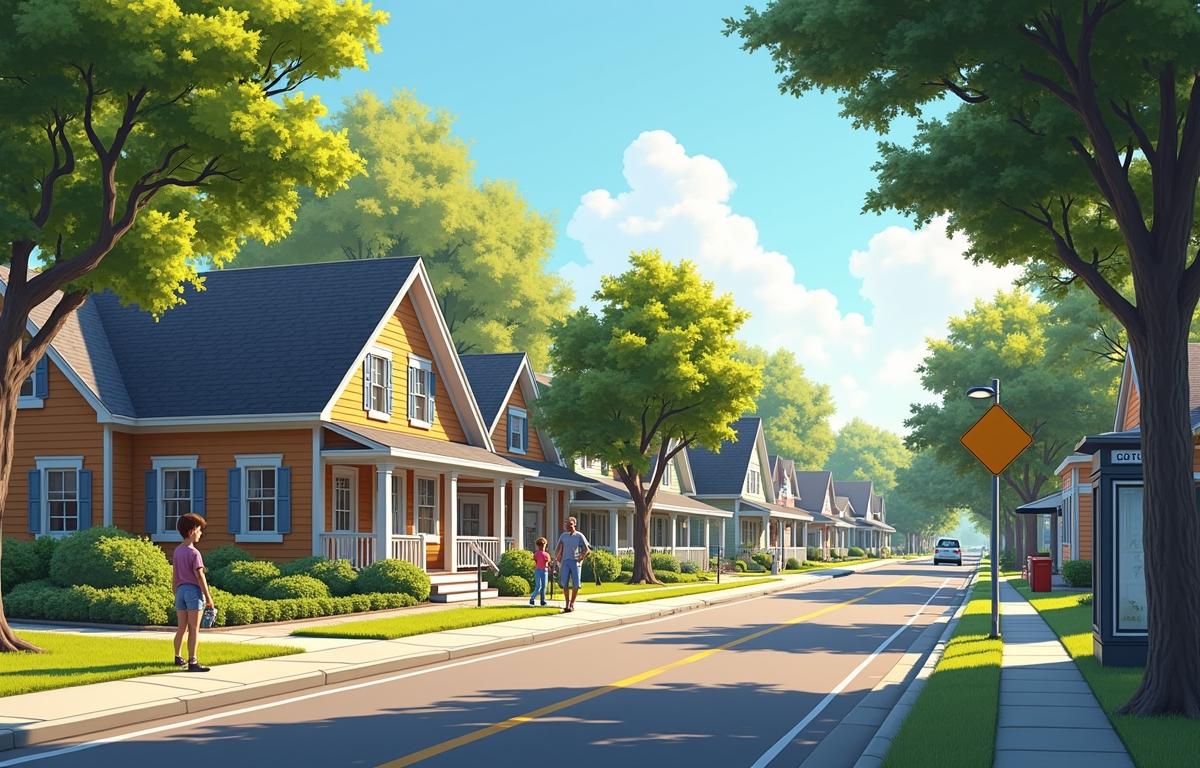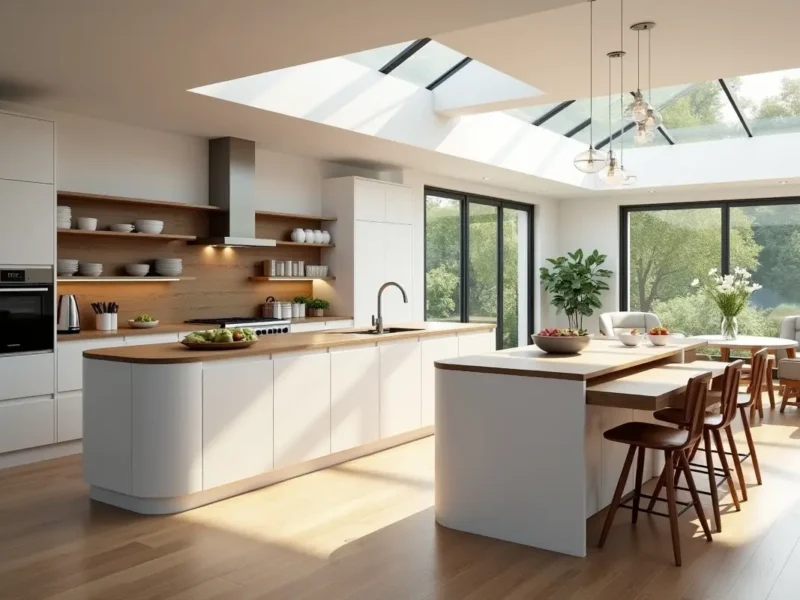Before buying a house, understanding how to research neighborhoods proves essential. Whether you’re a first-time buyer or an experienced homeowner, getting a sense of your surroundings can greatly influence your long-term happiness. Real estate listings might show glossy photos and enticing descriptions, but a neighborhood’s personality goes beyond what’s captured online. By digging deeper and exploring local activities, safety data, and school districts, you’ll be in a stronger position to decide which area aligns with your lifestyle.
Keep in mind that discovering these particulars in advance can save you from potential regret. Nobody wants to be stuck with a difficult commute or find out weekend noise levels are higher than they can tolerate. Where you live shapes your day-to-day routine and affects how you interact with your community. Taking the time to scout essential features now can protect your investment and elevate your overall happiness.
As you move forward with your home-buying plans, remember that every neighborhood holds its own distinct charm. Some places shine because of hip cafes and art galleries, while others offer spacious parks and bike-friendly roads. Investigating these aspects can help you better visualize your future, whether you’re aiming for a lively downtown vibe or a peaceful suburban retreat.
Checking Local Amenities Before House Shopping
Examining the local amenities can reveal whether a neighborhood suits your daily habits. You’ll want to see if there are nearby grocery stores, coffee shops, restaurants, and entertainment venues that cater to your preferences. This kind of research also helps you figure out whether conveniences like post offices or public transportation are within practical reach.
A quick walk or drive around the area is a simple way to test the waters. Spend a little time looking at how accessible the shops and services are. If you notice a thriving local scene with plenty of foot traffic, that can mean things feel vibrant. If the streets seem empty, the area might still be growing or simply quieter than you’d prefer.
Checking Walkability and Public Transit
Some people enjoy running quick errands on foot, while others rely on buses, trains, or subways to get around. Look up walkability scores or consult transit maps to see if the neighborhood meets your needs. Having these details allows you to factor in travel time and commuting costs when planning your day-to-day life.
Evaluating Safety and Crime Rates
Feeling secure in your new home matters far more than a fancy exterior. A key part of neighborhood research is analyzing crime statistics, checking local news sources, and getting a feel for how the area’s residents perceive safety. You might find that some places have active neighborhood watches or community programs that foster a sense of security.
Even if raw crime numbers give you a baseline, it’s beneficial to learn about the specific challenges an area might face. Neighborhoods with occasional property theft differ from those with more concerning issues. Speak with local residents or visit neighborhood social media groups to gauge how they talk about safety. People who live there can offer honest perspectives, and their daily experiences often reveal a more accurate image than simple stats.
Seeking Police Data and Community Alerts
Local police websites sometimes post alerts or statistics detailing issues in specific areas. Scan through these resources to learn about crime trends or upcoming safety initiatives. Take note of how active law enforcement is, whether they engage with the public, and whether residents collaborate to maintain a safe environment.
Getting a Sense of Community Atmosphere
A neighborhood’s social fabric plays a large role in how comfortable you’ll be. Some areas boast tight-knit communities that gather for planned events or festivals, while others offer a more private ambiance. Understanding this aspect can help you predict how well you’ll fit into the local culture.
Take time to observe people’s interactions. Are neighbors chatting on their porches or participating in shared activities at local parks? These little details hint at whether a neighborhood fosters friendships or maintains a more reserved vibe. Being aware of the community spirit is especially important if you expect to form lasting connections in your everyday life.
Local Events and Social Media Groups
Community gatherings often reflect broader neighborhood values and interests. Look out for farmers’ markets, fundraisers, or holiday celebrations. Joining social media groups dedicated to the area can offer more insights into upcoming gatherings, local recommendations, and opinions. This virtual window into a neighborhood’s culture can spell out whether the vibe suits your preferences.
Assessing School Districts and Education Programs
Good schooling options matter, even if you don’t have children right now. Neighborhoods with strong school districts typically maintain higher property values over time. Researching academic performance and available programs can highlight how seriously the local community takes education.
Real estate listings might boast about top-rated schools, but dig a little deeper. Check government or school rating websites for test scores and parent reviews. Speak with neighbors or parents at nearby parks. People often share their straightforward opinions if they feel strongly about a certain school’s success or shortcomings.
Extracurricular and Enrichment Opportunities
Academic performance is one side of the coin. Enrichment activities, after-school programs, and sports offerings give children the well-rounded experiences they deserve. If local schools offer robust extracurricular opportunities, it’s a sign that the district invests in students. That can, in turn, strengthen neighborhood ties.
Visiting at Different Times of the Day
A single afternoon visit won’t tell you everything about a neighborhood. Traffic patterns, noise levels, and social dynamics can shift depending on the time of day or week. If possible, show up early in the morning or drop by on a weekday evening. You’ll notice changes in activity that might clue you in on potential inconveniences like busy intersections or a neighbor’s loud music.
Visiting more than once also lets you see if street parking disappears after offices close or if weekend car traffic turns your route into a standstill. Commuting challenges don’t always show up on a midday tour. This added perspective helps you confirm whether the area truly fits your comfort zone.
Observing Rush Hour and Nightlife Patterns
Rush hour can completely transform a quiet street, and nightlife can change a neighborhood’s character. Pay attention if local bars or clubs line the streets, since noise could spike. On the other hand, if you appreciate a buzzing nightlife, then a busier environment might actually be a plus.
Engaging With Neighbors and Locals
A friendly neighborhood chat can provide a lot of color on everyday life. If you spot someone walking a dog or strolling with groceries, introduce yourself and ask a few questions. People who enjoy their area tend to share recommendations on favorite spots or talk about local traditions. If they’re cautious about divulging details, that might reflect an overall sense of caution.
Meeting friendly, helpful neighbors can make you feel welcome before you even move in. Along the same lines, if a community has a well-run homeowner’s association or a local council, it’s a signal of residents taking pride in their surroundings. You might find new friends who can offer hints on everything from the best local pizza joint to seasonal activities you won’t want to miss.
Noticing the Small Interactions
Simple interactions like holding doors at the supermarket or offering directions speak volumes about a community’s character. If you witness warmth among strangers, that’s a clue people generally look out for each other. It’s the everyday gestures that help you predict whether you’ll feel at ease making a home there.
Factoring in Property Value Trends
Keeping an eye on property value trends can guide your buying decision. Neighborhood research tips also include finding out how real estate prices have shifted over the past few years. Steady growth in home values might mean positive development in the area. However, spikes or declines could signal bigger issues that merit further investigation.
Look at how quickly homes sell. Rapid turnover sometimes indicates a hot market. It might also suggest that people aren’t staying put for long. That turnover could mean properties are in high demand, or it might point to hidden drawbacks. Aim to differentiate between normal housing market fluctuations and more serious red flags.
Long-Term Growth Potential
Try to spot signs of economic expansion. New businesses, planned infrastructure projects, or fresh housing developments can boost future property values. Even if you aren’t planning to sell anytime soon, a robust market can offer peace of mind.
Checking Local Ordinances and Zoning
While not the most exciting topic, local ordinances and zoning rules matter. Some areas have strict regulations on things like fences, home additions, or business operations. Understanding these laws can help you avoid surprises if you plan to remodel or rent out part of your property in the future.
If you have a particular lifestyle in mind such as owning chickens for fresh eggs or installing solar panels make sure local rules allow it. Checking zoning details now prevents frustration later, especially if you discover that plans for a home office or backyard workshop clash with neighborhood regulations.
Consulting City Hall or Local Websites
Your city’s official website might have details on zoning maps and upcoming proposals. Attending town hall meetings or reviewing public forums can also keep you in the loop. You’ll learn if a proposed construction project could drastically alter traffic patterns or affect local resources.
Making the Most of Your Visits
Few things compare to personally experiencing a neighborhood’s ambience. Stroll through the streets, explore local shops, and enjoy a meal at a nearby restaurant. Keep an open mind as you go. Sometimes, an area that initially seemed too quiet can reveal a laid-back lifestyle you’d love. Other times, a lively spot might lose its charm if it never seems to sleep.
Prioritize your deal-breakers. If easy access to parks is a must, head over during prime hours to gauge crowd levels. If you need reliable public transportation, try taking the bus or train to see how efficient it really is. These small tests can save you stress in the long run, giving you confidence in your final decision.
Staying Flexible and Observant
Your house-hunting journey might evolve as you gather new information. Be patient if you stumble on unexpected gems or scratch off neighborhoods you once found appealing. Remaining flexible ensures you pick a home that aligns with your priorities and fits your lifestyle. Ultimately, awareness of neighborhood nuances will shape a better path toward a place you can call home.



